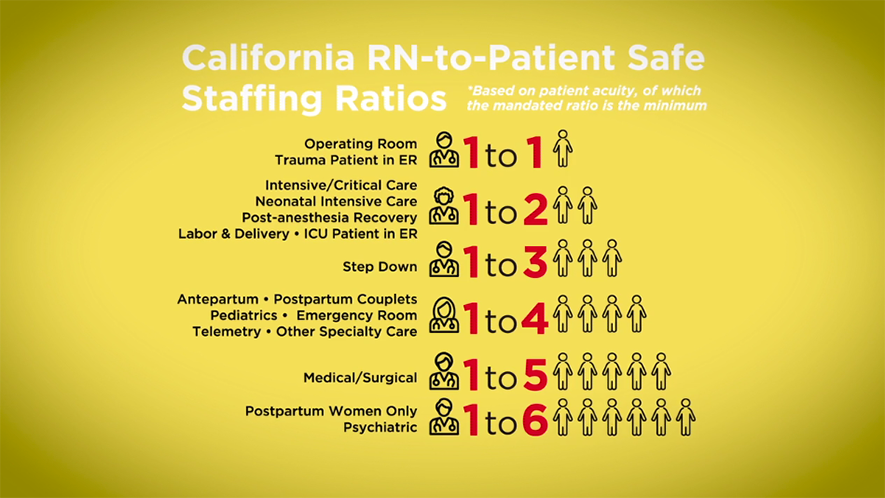Ratios: what does the California ratios law actually require?

A.B. 394, the CNA-sponsored safe staffing law, has multiple provisions designed to remedy unsafe staffing in acute-care facilities. California’s safe staffing standards are based on individual patient acuity, of which the RN ratios is the minimum.
Mandates Minimum, Specific, Numerical Ratios
Establishes minimum, specific, numerical RN-to-patient ratios for acute-care, acute-psychiatric,and specialty hospitals.
Requires a Patient Classification System — Additional RNs Added Based on Patient Acuity and Need
Additional RNs must be added to the minimum ratios based upon a documented patient classification system that measures patient needs and nursing care, including severity of illness, complexity of clinical judgment, and the need for specialized technology.
Regulates Use of Unlicensed Staff
Hospitals may not assign unlicensed assistive personnel to perform nursing functions or perform RN functions under the supervision of an RN including administration of medication, venipuncture, and invasive procedures protecting RN scope of practice and patient safety.
Restricts Unsafe “Floating” of Nursing Staff
Requires orientation and validated current competence before assigning a nurse to a clinical area. Temporary personnel must receive the same orientation and competency determination as permanent staff.
Applies At All Times
The ratios apply “at all times,” including meals and breaks, and excused absences.
Prohibits Averaging
There can be no averaging of the number of patients and the total number of RNs.
Bars Cuts In Ancillary Staff as a Result of Ratios
In the first year of implementation, CNA successfully fought off challenges from several California hospitals who responded to the ratios by attempting to cut back on LVNs and unlicensed personnel, going against the intent of the law. The state’s safe staffing standards maintain the existing staffing model which utilizes RNs, LVNs,and unlicensed assistive personnel.